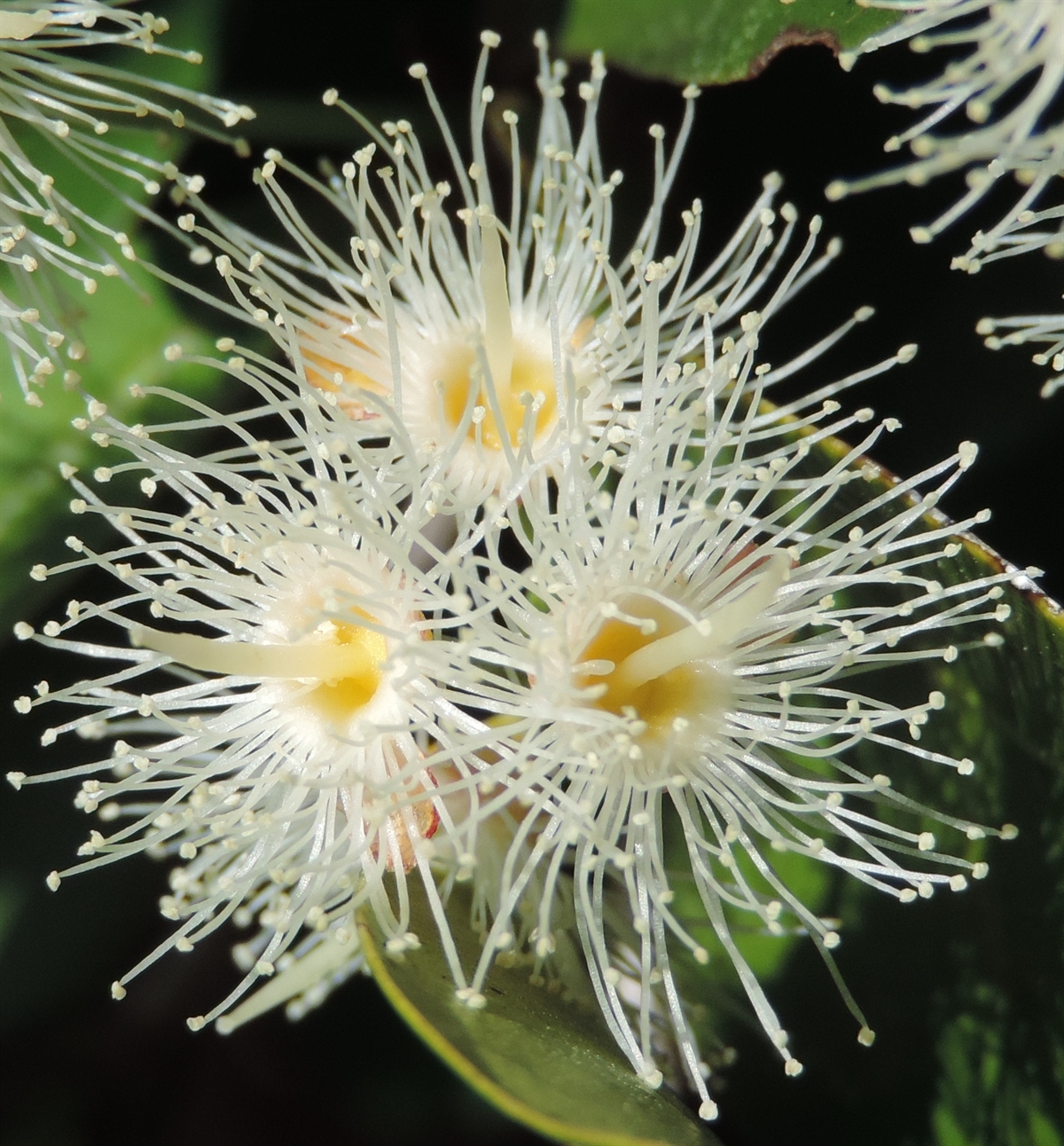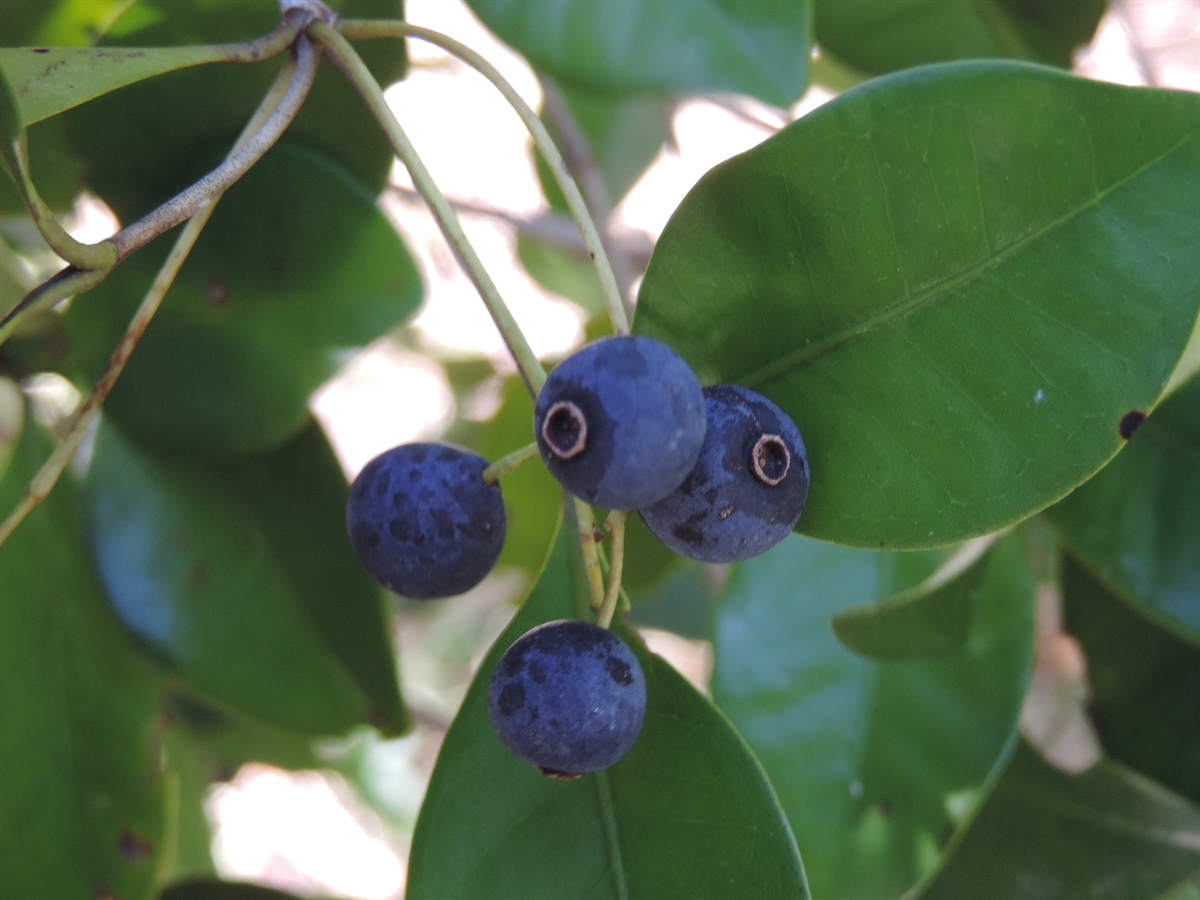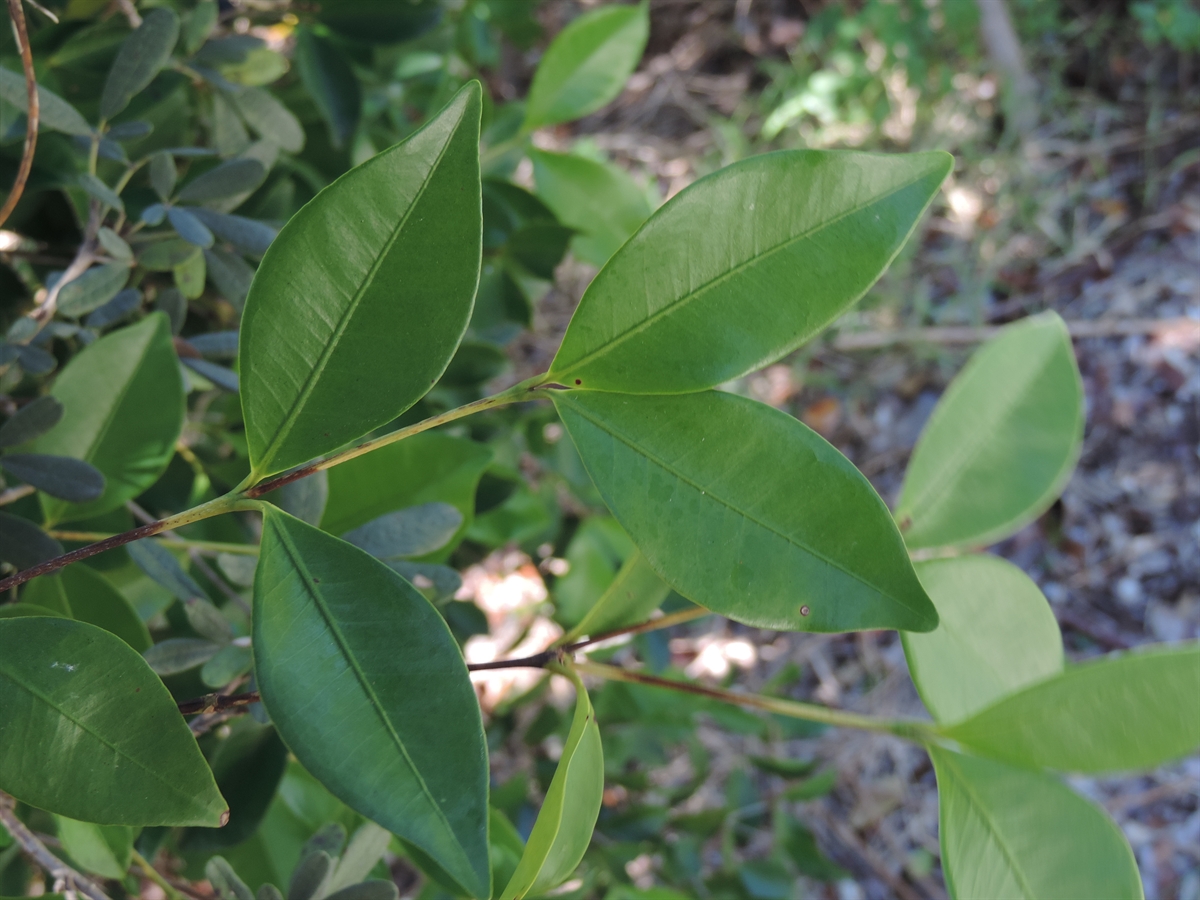Habit: Myrcia zuzygium grows as a large shrub to small tree up to 11 meters in height with a trunk to 20 cm in diameter. The leaves are arranged oppositely, to 8 centimeters in length, elliptical to elliptic ovate, with a rounded or blunt acuminate leaf apex and an entire margin. The abaxial surface has small pellucid dots. The leaves, when crushed, have a slight odor.
The incomplete, perfect, actinomorphic flowers are arranged in short terminal or axillary panicles. The calyx and stamens are fused forming a hypanthium. The calyx is reduced forming a cap in the immature floral stage. The corolla is absent. There are numerous white stamens. The ovary is inferior with 2 locules and numerous seeds. The fruit is a berry that turns dark blue at maturity.
Habitat: Myrcia zuzygium grows in Dry Broadleaf Evergreen Formation – Forest/Shrublands (coppice and scrublands).
Distribution: Myrcia zuzygium occurs on in the northern island groupings of the Lucayan Archipelago, the Greater Antilles, and Florida.
Medicinal/Cultural/Economic usage: Myrcia zuzygium is not used medicinally in the Lucayan Archipelago.
The berrys are edible.


